Analysis on the development status of world cassava production
Industry News / Chat online / Technical support / December 12, 2018
The world's cassava production has a history of nearly 5,000 years. According to the United Nations Food and Agriculture Organization (FAO) database, cassava is grown in more than 100 countries and regions around the world. Africa, Asia, Latin America and the Caribbean are the main producing areas of cassava, with Africa having the largest area and Asia followed. Cassava is mainly grown in tropical and subtropical regions between 30 degrees south latitude and 30 degrees north latitude, below 2,000 meters above sea level, with an average annual temperature of 18 °C and a frost-free period of more than 8 months. At present, cassava has become a major dry crop and feed crop widely cultivated and is one of the daily main foods of people in many tropical regions.
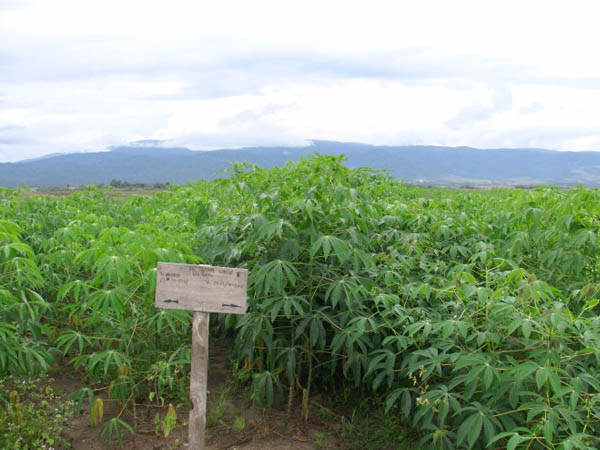 Cassava plant
Cassava plant
I. Analysis of the development status of the world cassava planted area
Asia, Africa and the Americas are the main producing areas for cassava. The world's top ten cassava planting areas (mainly based on the number of countries planted in 2011, hereinafter referred to as "planting countries") are Nigeria, Congo (Gold), Brazil, Indonesia, Thailand, Angola In Mozambique, Ghana, Tanzania, and Vietnam, the harvesting area of cassava in the ten major growing countries accounts for about 71.7% of the world's total harvested cassava.
Nigeria is the world's largest cassava grower, and its harvested area has risen from 2.551 million hectares in 1991 to 3.737 million hectares in 2011, showing a steady growth trend. The country's harvested area accounts for 19.1% of the world's total harvested area. Congo (Gold) is the second largest country in the world for cassava harvesting. The country's harvested area has been declining year by year, from 2.47 million hectares in 1992 to 1.85 million hectares in 2010 and in 2011 it has risen to 2.17 million hectares. The country's harvested area accounts for approximately 11.1% of the world's total harvested area. Brazil is the third largest country in the world for harvesting cassava. The harvested area of the country is fluctuating. The largest year is 1995, about 1.946 million hectares. The smallest year is 1996, about 1.590 million hectares. The country harvests about the world. 8.7% of the total harvested area. Indonesia is the fourth largest country in the world for cassava harvesting. The country's acreage has not changed much. It is basically stable between 1.2 and 1.4 million hectares. The largest harvested area was in 1996, about 1.415 million hectares. The smallest year is 2009. Year, about 1.175 million hectares. Its harvested area accounts for about 6.1% of the world's total harvested area.
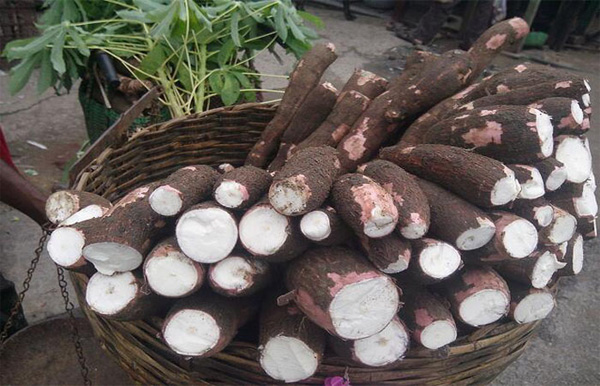 Harvested cassava
Harvested cassava
Thailand is the fifth largest country in the world for harvesting cassava. In addition to 2002 and 2005, the country's harvested area is over 1 million hectares in most years. The largest harvested area is 1993, which is about 1.438 million hectare. The smallest year was 2006, which was about 986,000 hectares, and the country's harvested area accounted for 5.8% of the world's total harvested area. Angola is the sixth largest country in the world for harvesting cassava, and the harvested area is increasing year by year, from 400,000 hectares in 1991 to 1.07 million hectares in 2011. Its harvested area accounts for 5.5% of the world's total harvested area. Mozambique is the seventh largest harvester of cassava in the world, and its harvest area is fluctuating, but it is basically between 900,000 hectares and 1.2 million hectares. Its harvested area accounts for 5% of the world's total area. Ghana is the eighth largest country in the world for harvesting cassava. The harvested area of the country has increased from 539,000 hectares in 1991 to 890,000 hectares in 2011, and the overall trend is slowly increasing year by year. Tanzania is the ninth largest country in the world for harvesting cassava. The country's harvested area is fluctuating and generally showing a slow growth trend. Vietnam is the tenth largest country in the world for harvesting cassava, and the country's harvested area is slowly increasing year by year.
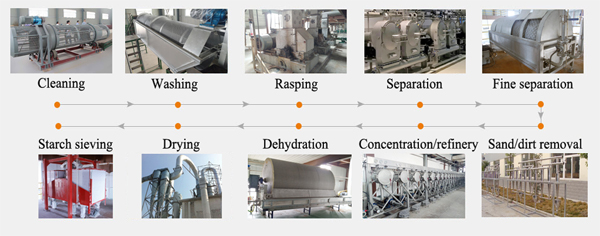 Cassava starch processing machines from Doing Company
Cassava starch processing machines from Doing Company
Ⅱ The development status of the world total production of cassava
The world's total production of cassava rose from 162 million tons in 1992 to 252 million tons in 2011. In addition to the small fluctuations in 1995-1998, the overall growth rate was slow, with an average annual growth rate of 2.35%. The top ten producers of cassava production in the world are Nigeria, Brazil, Indonesia, Thailand, Congo (Gold), Angola, Ghana, Vietnam, India, and Mozambique. Nine of the top ten planting countries are located in the top ten list of major producing countries, with only Tanzania being excluded and being replaced by India into ten major producing countries. The total output of these ten major producing countries accounts for 76.18% of the world's total output, indicating that the world's cassava production is still concentrated in these major producing countries. In 2011, the total output of Asian cassava was 77 million tons, accounting for 30.4% of the world's total output; the total output of African cassava was 141 million tons, accounting for 55.89% of the world's total production; the total output of American cassava was 34 million tons, accounting for 34 million tons. 13.62% of the world's total production. Africa is the largest producing area in the three main producing areas of cassava.
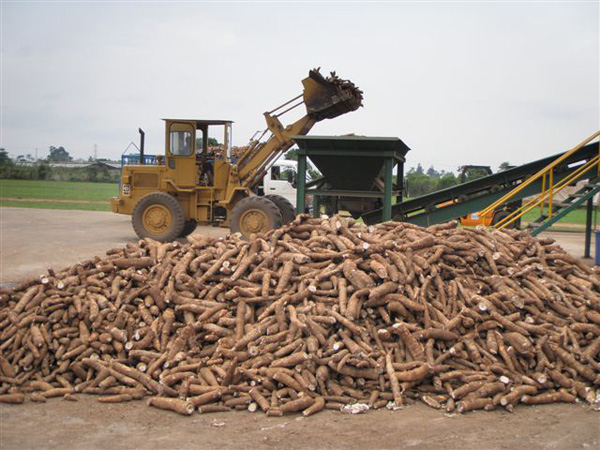 Cassava harvest and processing
Cassava harvest and processing
Ⅲ The development status of world cassava yield
The average yield of cassava in the world increased from 9.8 tons/ha in 1991 to 12.8 tons/ha in 2011, with an average annual growth rate of 1.34%, showing a slow growth trend, indicating that the world's cassava cultivation level is increasing year by year. The average yield of cassava in the world is increasing at a rate of 0.2-0.3 tons/ha per year. The average yield in 2006 is 12.1 tons/ha, which is 0.8 tons/ha higher than that in 2005. It is the fastest annual growth rate of average yield in 21 years. . Among the 10 major producing countries, the average yield of cassava in Nigeria, Brazil, Indonesia, Thailand, Angola, Ghana, Vietnam and India is higher than the world average. Among them, India's average yield is the highest in the world, with an average yield of 36.5 tons/ha in 2011, which is 2.85 times of the world average yield; while the average yields of the two countries in Congo (Kinshasa) and Mozambique are lower than the world average, Mozambique's The yield level is the lowest in the 10 major producing countries. In 2011, the average single is 6.4 tons/ha, which is only 50% of the world average. The average yield of Congo (gold) in 2011 is 7.2 tons/ha, which is only the world yield level. 56.3%. Among the three major producing areas, the average yield of African cassava in 2011 was 10.8 tons/ha, the average yield of American cassava was 12.9 tons/ha, and the average yield of Asian cassava was 19.6 tons/ha. Asia is the three main producing areas. The highest yield per unit of production.
If the cassava production in the world producers are sorted by per hectare yield, the top 10 countries are India, Thailand, Cambodia, Malawi, Indonesia, China, Vietnam, Paraguay, Brazil, Benin, and only 10 of these countries. India, Thailand, Indonesia, Vietnam, and Brazil are among the top 10 countries in terms of yield, total output, and acreage, while Cambodia, Malawi, China, Paraguay, and Benin are the top ten producers in the world. The total output is not among the top 10 in the world, indicating that the five countries cassava plantation is small scale.
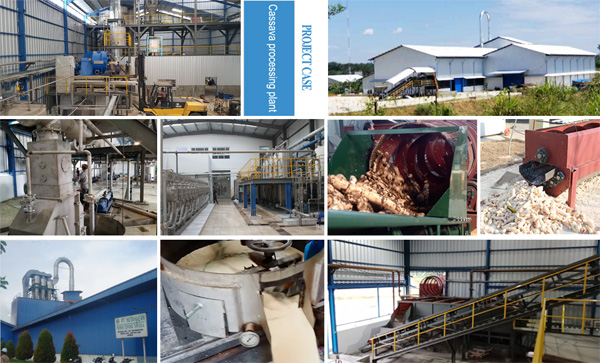 Cassava processing factory project from Doing Company
Cassava processing factory project from Doing Company
Ⅳ Summary
1. The world's cassava harvested area increased from 16.33 million hectares in 1991 to 19.464 million hectares in 2011, with an average annual growth rate of 0.93%, showing a steady growth trend; the world's average yield of cassava was 9.8 tons/ha from 1991. It rose to 12.8 tons/ha in 2011, with an average annual growth rate of 1.34%, showing a slow growth trend overall; the world's total cassava production increased from 162 million tons in 1991 to 252 million tons in 2011, showing a slow growth overall. The trend is an average annual growth rate of 2.35%.
2. Nigeria, Brazil, Indonesia, Thailand and Congo (Golden) are among the top 5 countries in the world for total cassava production. Since 1991, Nigeria has been the world's largest producer of cassava, and its proportion of cassava production in the world has increased year by year. The proportion of cassava production in the three major producing countries of Brazil, Thailand and Congo (DRC) has declined year by year in the world. In 1991, the total production of cassava in Brazil accounted for 15.27% of the world's total production. In 2011, it decreased to 10.08%. In 1991, the total production of cassava in Congo (gold) accounted for 12.06% of the world's total production. In 2011, it decreased to 6.17%. In 1991, the total cassava in Thailand. Production accounted for 12.27% of the world's total production, and in 2011 it fell to 8.69%. Ghana and Vietnam, the top 10 producing countries, have the fastest annual growth rates of 11.45% and 7.2% respectively.
3. Congo (gold) cassava harvested the second largest in the world, but its average yield is only 8 tons / hectare, far below the world average, which makes the total production of Congo (gold) cassava only in the world 5. India is the world's highest yield country, with the least planting area among the 10 major producing countries. In 2011, India's cassava planting area was 221,000 hectares, only 5.91% of the first major producing country (Nigeria). It is 22.67% of the planting area of the tenth largest producing country (Mozambique). High yields make India among the top ten major producers of cassava in the world.
contact us
- Do you want to buy machine?
- Yes, I want to buy machine
- No, I want to learn more in advance.
- What is your raw material?
- Cassava
- Potato
- Sweet potato
- Others
- 2. What is the final product you want to produce?
- Garri
- Cassava flour
- Cassava starch
- Cassava chips
- Attiekie
- Bammy
- Others
- 3.What is your capacity plan?
- Small scale garri machine
- 1ton per day
- 2tons per day
- 3tons per day
- 10tons per day
- 20tons per day
- Others
- 3.What is your capacity plan?
- Small scale
- 5tons per day
- 10tons per day
- 20tons per day
- 50tons per day
- 100tons per day
- Others
- 3.What is your capacity plan?
- Small scale
- 5tons per day
- 10tons per day
- 20tons per day
- 50tons per day
- 100tons per day
- 200tons per day
- 300tons per day
- Others
- 3.What is your capacity plan?
- Small scale
- Middle type
- Large scale
- What is your capacity plan?
- Small scale
- 5tons per day
- 10tons per day
- 20tons per day
- 50tons per day
- 100tons per day
- 200tons per day
- 300tons per day
- Others

 Call us
Call us Chat online
Chat online
